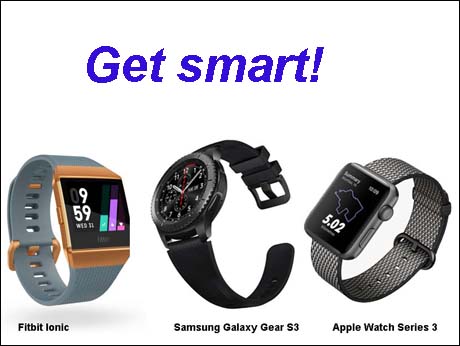
Apple new watch release takes on traditional competitors like Samsung and Fitbit but does it have an edge? Indian buyers may have seen some of the key features in other brands
Bangalore, September 25 2017: Let's for a moment forget the stories in the US media about the initial glitches with the newly announced Apple Watch Series 3. For the first time, Apple introduced a feature where the watch could make and take calls without a captive phone in tow. It worked for some reviewers, it didn't for others but such problems related to connectivity have in all probability been sorted out by now. Anything connected with an Apple announcement is treated with frenzy by the US media and sections of our own media, don't know better than to re-circulate the hype.
Incidentally, adding a SIM to a smart watch to make it an autonomous phone may be a big deal in the US. Here we have had such watches for two years now. Back in June 2015, Indian player Intex made an audacious launch of just such a SIM-driven smart watch, the iRist at the Mobile World Congress in Shanghai. It was an Indian design -- and sold for less than Rs 12,000. In fact the most affordable smart watch I came across in India, that ran independent of a phone was a brand called Bingo whose watch sold for Rs 2499 last year.
The other claim to fame of the new Apple Watch is the use of an OLED or organic light emitting display. The ASUS ZenWatch 3 has already been there, done that. It sells in India for Rs 18,990.
The Apple Watch for the first time incorporates an altimeter and GPS -- useful if you are the outdoors hiking and climbing type. The altimeter -GPS feature will come as no surprise to buyers of the latest Fitbit wearable -- Fitbit Ionic which goes on global sale this month. The Ionic though does not have an LTE connection and you still need to sync your mobile phone. It does however incorporate an NFC or Near Field Communication chip, so you can use your credit or debit card with a tap and pay option with your wearable.
Unlike Fitbit and Apple, Samsung has opted for a more classic circular wristwatch look. This allows it to put in twist-and- adjust controls on the rim, into the Gear S3, saving you having to peer at the screen too often. But you do need WiFi and a voice call app -- or Bluetooth -- to make and take calls that come to your phone. The Gear S3 scores with its larger battery that can last 2 days ( though they say 4), against 18 hours claimed for the Apple Watch Series 3.
The heaviest stainless steel Apple Watch Series 3 option weighs around 52 grams which is lighter than the 57 gram Samsung Gear S3 but heavier by a whisker than Fitbit Ionic. This may not therefore, be consideration. It costs $399 in the if you want the cellular version ( $ 329 if you don't) compared to Fitbit Ionic's $ 299 and Gear S3's $ 349. In India the Apple Watch configuration on sale this week with WiFi and Bluetooth but no cellular connection, retails at Rs 29,900.
One caveat: The Gear S3 has been around from November 2016 and 10 months in today's Internet world is almost a generation. It might be a fairer comparison to wait for the next Samsung Gear and see how it stacks up. Meanwhile the gee-whizz specs of the Apple Watch Series 3 which will inevitably see queues of buyers in India, may not come as a surprise to other Indians who have had the chance to experience OLED displays, built in SIMs and GPS on other, devices. But when was Apple about paisa vasool or value for money? - ANAND PARTHASARATHY